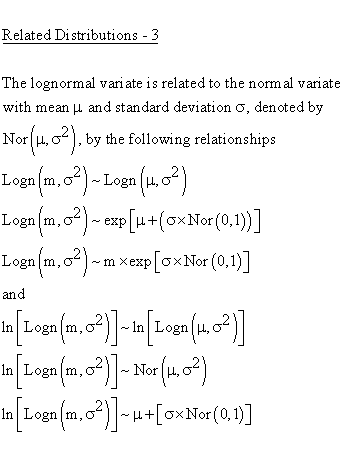
To learn more about your current or a prospective employer’s family leave, ask the company’s human resources department. That said, a growing number of private companies and even states now offer new parents some paid time off as part of a family leave policy. Read on to learn what you need to know about navigating maternity leave.
Some states and individual employers offer paid parental leave, but not all. That’s because the FMLA doesn’t require employers to pay their workers during the time they take off. You may still qualify if you have recently stopped working, and it does not matter if you’ve had different jobs or periods of unemployment. If your employer has told you that you are ineligible for statutory maternity pay, they must give you an SPM1 form to explain why.
Related content
Even if your employer pays more than SMP, it would be unusual for you to be paid any maternity pay beyond that 39-week point. Unfortunately, many women can’t take that much time off because their employers don’t offer enough (or any) paid leave for childbirth — and they can’t afford to go without a paycheck. You can claim maternity allowance when you have been pregnant for 26 weeks, and payments can start 11 weeks before your baby is due. Under FMLA, men are also eligible for 12 weeks of unpaid leave to care for a child.
Check your contract or company maternity policy, or ask your employer whether you get contractual maternity pay. You might be able to get the full amount of statutory maternity pay from more than one employer. For each employer you have, the rules are the same as if they were your only employer.
The benefit cap
Through the Family and Medical Leave Act (FMLA), the federal government guarantees 12 weeks of unpaid, job-protected leave for the birth of a newborn or adopting a child. But the law only applies to certain maternity allowance employees at certain companies (more on that below). As £110.70 is less than £172.48, Grace will keep getting £110.70 of statutory maternity pay each week for the next 33 weeks of their maternity leave.
- If they do, it will be unfair dismissal because of discrimination.
- To get the full 39 weeks of maternity allowance of £156.66 per week, you need to have paid Class 2 NI contributions for at least 13 of the 66-week test period before your baby’s due date.
- Universal Credit was brought in during 2015 and replaces some older benefits and tax credits.
- If you’re thinking you’d like to use your accrued vacation or sick time to extend your leave — tacking it on after the 12 weeks from FMLA — you may or may not be able to do that.
- As you complete the form, you will be guided through the questions based on the responses you provide.
If your employer is taken over by another business your weeks of work will include time working for both employers. If you’ve not paid any Class 2 National Insurance contributions, you’ll be entitled to £27 per week Maternity Allowance. If you’ve paid less than 13 weeks of Class 2 National Insurance contributions, your Maternity Allowance will be calculated based on how many weeks of contributions you’ve made. You’ll get £172.48 a week or 90% of your average weekly earnings (whichever is less) for 39 weeks if you’re employed or have recently stopped working. Include the dates that you were on the scheme and how much (as a percentage) of your normal pay you were actually paid. If you don’t qualify for Maternity Allowance, it’s a good idea to try applying for Universal Credit.
Help us improve GOV.UK
Women who are unable to get Statutory Maternity Pay may be instead entitled to Maternity Allowance. A claimant has to have worked 26 weeks within the 66 weeks before their due date, and have earned at least £30 a week for 13 of those weeks to qualify. If the claimant has not paid enough Class 2 National Insurance Contributions in this period, they will instead be entitled to a lower amount. If you don’t receive your form, it’s worth giving your healthcare professional a nudge as you’ll need to get it to your employer in time to claim for Statutory Maternity Pay.
The cost of living and statutory parental pay: e-petition 617155 … – Commons Library
The cost of living and statutory parental pay: e-petition 617155 ….
Posted: Fri, 16 Jun 2023 14:37:30 GMT [source]
Having previously worked at Shares Magazine, where she specialised in small-cap stocks, Rachel developed a passion for consumer finance and saving money when she moved to lovemoney.com. Rachel went freelance in 2020, just as the pandemic hit, and has since written for numerous websites and national newspapers, including The Mail on Sunday, The Observer, The Sun and Forbes. She is passionate about helping consumers become more confident with their finances, giving them the tools they need to take control of their money and make savings. Universal Credit was brought in during 2015 and replaces some older benefits and tax credits.
Who can get maternity allowance and can you claim it on Universal Credit?
If your employer tries to cut your hours to reduce your maternity pay, this is discrimination. This is where planning ahead can come in handy, and you can think about saving money for the tail end of your maternity leave while you are still working. Technically, STD is meant to cover your salary, or a portion of it, during the time you’re unable to do your job as a result of illness, injury or childbirth. Although motherhood is not a disability, short-term disability (STD) insurance can help extend your maternity leave. However, you must have been employed and/or self-employed for at least 26 weeks in the 66-week test period.
You can be paid for up to 10 ‘keeping in touch days’ while taking time off to have a baby. These are days when you work for your employer while you’re getting maternity pay or Maternity Allowance. With money tight for millions of households across the UK, knowing how much maternity pay you will receive is crucial to helping you budget more effectively when you start maternity leave. When you understand how maternity pay is calculated, you can assess how soon you might need to return to work. It’s also worth knowing who pays for maternity leave and which benefits you might be entitled to.
How long can I get Maternity Allowance for?
The key to having an undisturbed leave is to prepare your office beforehand and put a detailed plan in place for who will handle what in your absence. Make sure that you’ve left behind plenty of documentation for your keys tasks and, if you have decision-making authority in any areas, make sure you’ve delegated that to others. Report a change on your Universal Credit account if you start getting Maternity Allowance. You may get an extra amount of Universal Credit for your children (whether you get Maternity Allowance or not). Your Universal Credit payment will be reduced by an amount equal to your Maternity Allowance payment. You can increase your Maternity Allowance by paying more Class 2 National Insurance contributions.

